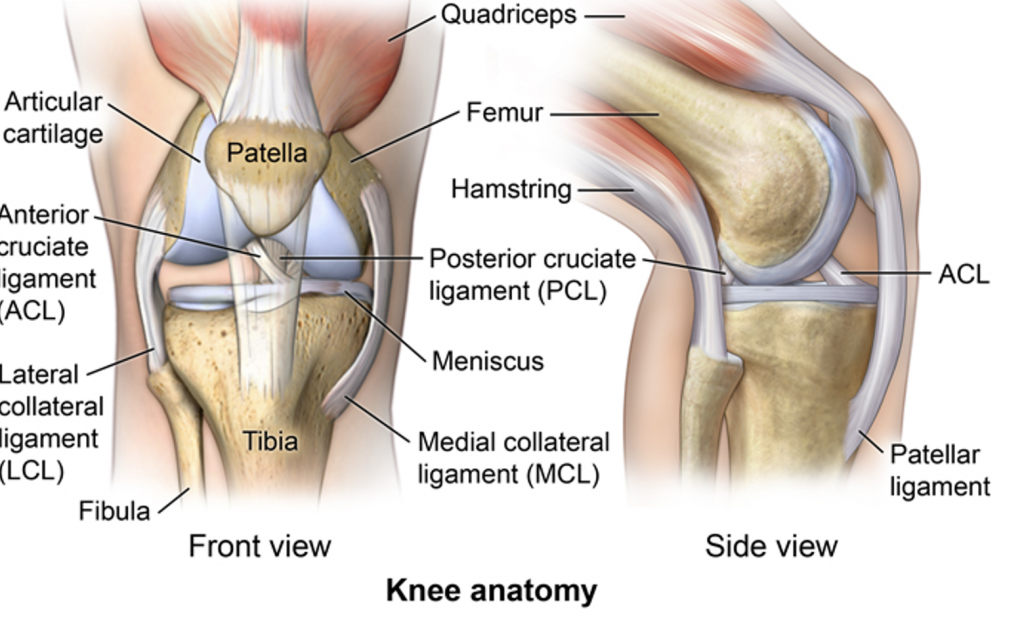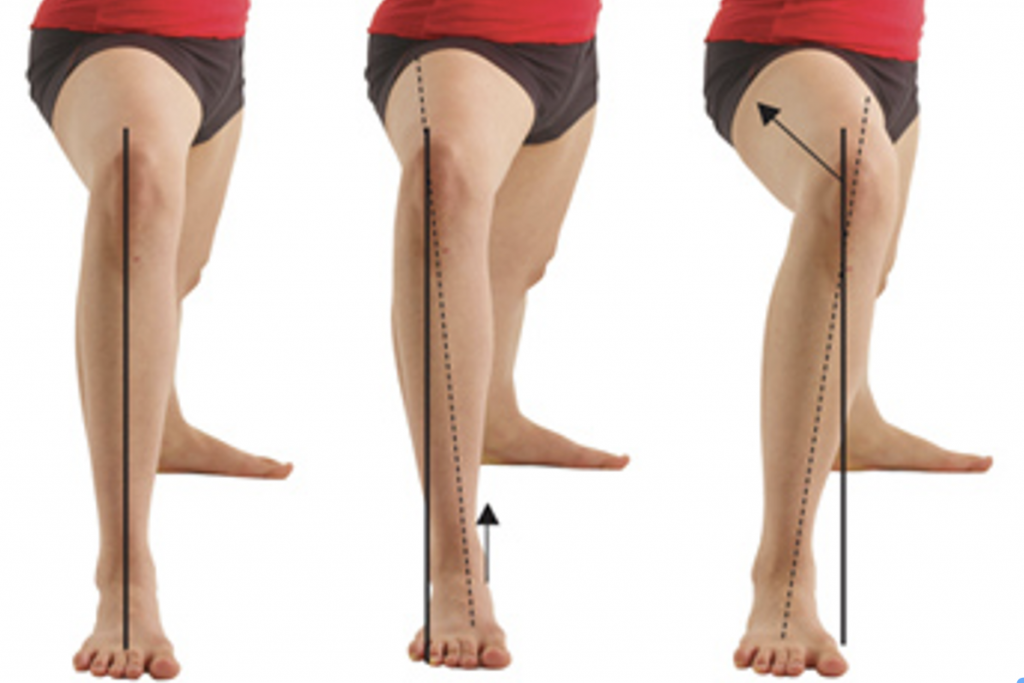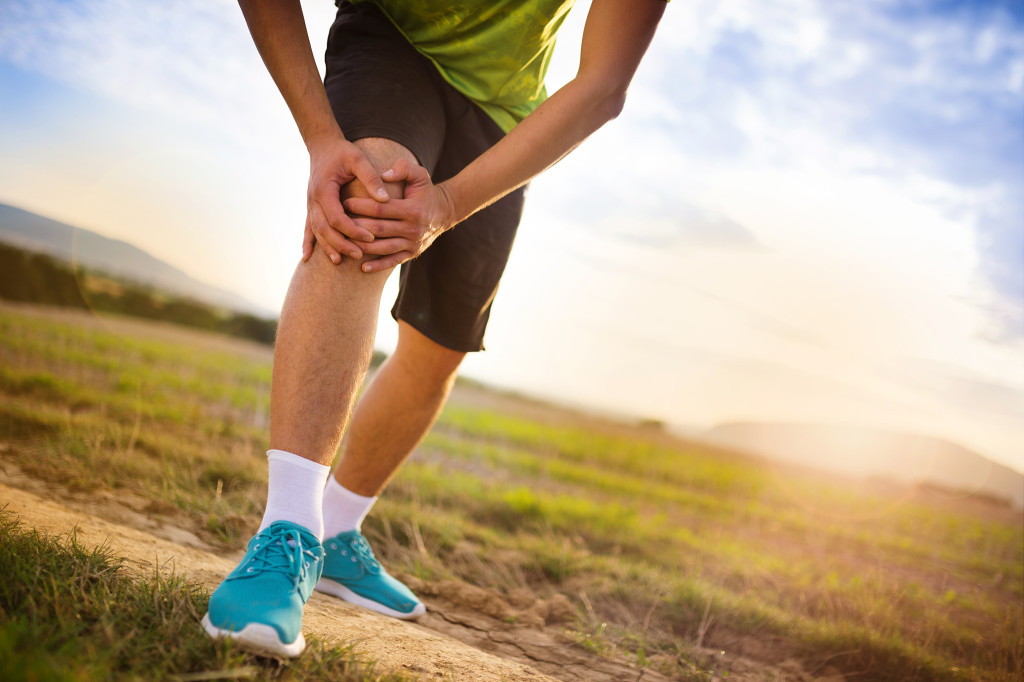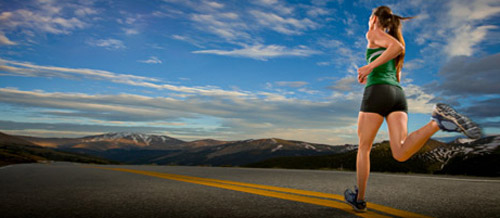Are you, or have you ever, experienced knee pain? Knee pain is extremely common in those that are active as well as people who are inactive. Diagnoses for knee pain vary from patellar tendonitis, to meniscal tears, to osteoarthritis. Most people think that strengthening the quads (thigh muscles) are the best way to treat their knee pain. But what if I told you that most knee pain is a result of biomechanical dysfunction (poor movement patterns in the body) due to poor gluteal (buttocks) strength and/or activation in weight bearing movement – movement with your feet on the ground? The truth is, according to the latest research findings, the hip muscles, namely the glutes, most effectively achieve proper alignment of the knee during weight bearing activity. Why is proper knee alignment important? And what is proper knee alignment anyway?

Image: https://comportho.com/anatomy/anatomy-of-the-knee/
Let’s start with the anatomy of the knee joint. It is comprised of three bones separated by cartilage – the femoral condyle on top, the tibial plateau on the bottom, the patella in the front, and the menisci in the middle. It is held together on the outside by the joint capsule, ligaments and muscles (medial and lateral collateral ligaments, hamstrings, quads and gastrocs, and popliteus), and on the inside by the ACL and PCL. It is a hinge joint, which means it has primarily two motions – flexion (bending) and extension (straightening) with the exception of small rotational components at end range motion. As the knee bends and straightens, the patella (or knee cap) moves back and forth in a groove in the femoral condyle.
Since the knee is meant to move mostly in this one plane, alignment is of greatest importance. If the femur is not aligned properly with the tibia, wear and tear will occur in all the supporting structures, as well as the surfaces of the bone and menisci causing muscle strains, ligament sprains, meniscal tears, and arthritis to name but a few. So how do we assure proper knee alignment in our movement? The answer is simple – glutes.
“The glutes you say?” But it is an entire thigh removed from the knee! How is it possible for the glutes to be the prime protector of the knee? Simple. Let’s review the glutes and their functions.
There are quite a few gluteal muscles located in the hip. However, the ones mainly responsible for proper safety and knee alignment are the muscles that separate the thighs and outwardly rotate the hip to prevent medial collapse of the knee.
What is medial collapse of the knee? It looks like this, and is often seen in squats, running, and yoga poses.

Image: https://yogainternational.com/article/view/yoga-therapy-for-your-knees1
Medial collapse is what causes most knee injuries in sports and recreational activities. This happens when the knee moves inward during knee bending (squats, lunges, running, warrior poses in yoga), out of alignment with the ankle and hip. This scenario puts several structures at risk, including medial collateral ligament, medial meniscus, ACL, and patellofemoral joint to name just a few.
The reason the glutes are the primary steerers for the knee is because they control the femur bone at the top, affecting the condyle at the bottom (top of knee joint). When the glutes engage, they ‘steer’ the knee in alignment by controlling the position of the top half of the knee joint, namely the femur bone.
So even though there’s nothing inherently wrong with strengthening quad muscles, there are a few considerations…
- Do you have knee pain?
- Do you mostly move in a quad dominant or glute dominant manner? (For instance, do you feel the burn in your thighs or in your hips going up stairs, squatting, walking uphill?)
- How well aligned is your knee during your movements and activities?
- Lastly, how does this information apply to you?
If you’re a runner, there are some simple tests you can do to see if your knee collapses inwardly during running, putting your knees at risk. But getting a running analysis done by a professional such as a physical therapist could be most helpful in keeping you running safely for as long as you wish. Basketball and soccer players especially need to pay close attention to the way they cut and pivot, and determine if movement retraining is necessary for safe participation in sports and recreation, minimizing risk for injury. If you practice yoga, glutes are often underemphasized in the practice, focusing more on quads and inner thighs. I’m a yogi. I’ve practiced for many years, and taught for almost as many. But I am always surprised at how little attention is given to the glutes and their relationship to knee safety in yoga classes. So many poses are quad dominant, or at least cued in such a way that it focuses on the quads instead of glutes. Next time you practice, play with your postures and try to activate those glutes rather than the quads every now and then. See how it feels in your body. Experience your body instead of blindly following someone else’s cues. But most importantly, if you have knee pain, stay away from any quad dominant activities. They only increase the tension and pressure in the knee joint that can lead to an exacerbation of your symptoms.
–
Danél Lombard, MPT, PhD is an Integrative Physical Therapist at the Akasha Center for Integrative Medicine. You can schedule an appointment with her by calling 310-451-8880 or emailing us at info@akashacenter.com.


















